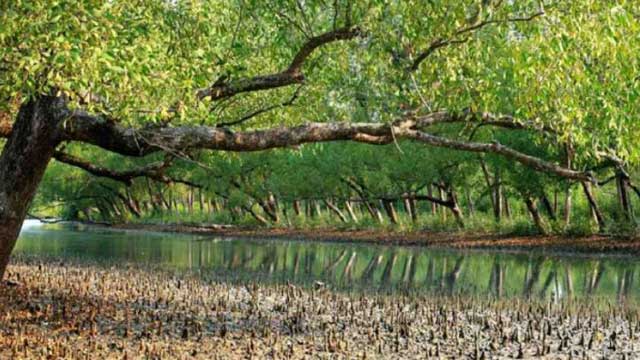After three months of closure, the Sunderbans opened on Friday for fishermen, other forest-based livelihood earners, and tourists.
The world’s largest mangrove forest was closed for all types of foresters, including tourists, from June 1 to August 31 by the forest department to ensure the breeding of 375 species of wild animals and 291 species of fish, including the Bengal tiger and deer.
Forest workers and tourists will be allowed to enter the Sunderbans from Friday, the authorities said.
Ahead of the reopening, local fishers, tour operators, launches and boat drivers were gearing up to enter the Sunderbans once again. Meanwhile, the eco cottages in the area are also preparing to extend a warm welcome to eager tourists.
The director of Sundari Eco Resort, Md Saiful Islam, said, ‘We have completed all the arrangements to welcome the tourists.’
‘Tourists would be able to take in the Sunderbans’ enormous beauty from within the resort while also living safely and eating healthily while listening to the chirping of the local birds,’ he said.
Rubel Hossain, a trawler driver of Mongla Ghat, said, ‘We have been earning a living by carrying tourists in the trawler from Mongla to Karamjal for a very long time. We were unemployed for three months due to the closure of the forest. Hopefully, I can get back to work tomorrow. I’ve already worked on cleaning the trawler and decorating the kitchen.’
Mohammad Belayet Hossain, Divisional Forest Officer (DFO) of East Sunderbans Division, said tourists and forest dwellers are banned from entering the Sunderbans for three months during the breeding season every year.
‘At this time, wildlife and fish species can roam freely and reproduce without any interruption as the forest remains noise-free. As a result of the initiative, the Sunderbans came back to life in these three months.’
However, the forest department has imposed certain regulations for those seeking to explore the world’s largest mangrove forest following its reopening.
‘Single-use plastics, such as plastic water bottles and packets of chips, will not be permitted within the forest. Tourists, tour operators, and foresters will be informed of these new guidelines while seeking permission to enter the Sunderbans from the forest department,’ the forest official told UNB.
According to the Forest Department, the Sunderbans currently have 114 royal Bengal tigers, 375 species of wildlife, including 200,000 deer, 334 species of plants, including sundari, 165 species of algae, 13 species of orchids, and 300 species of birds.
There are 291 species of fish, including crocodiles and six species of dolphins, in 1874 square kilometers of wetlands inside the Sunderbans.





